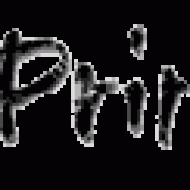|
What to plant?
|
 |
|
Vegetables!
check out the table to pick which one to plant and how to get the timing right. Rule of thumb, read the packet, or plant now! If you are planting them in trays, watch out for browning stems, they are a definite sign that you need to plant out.
Flowers, this is a bit late in the season (March) to get them to bloom by May 1. The best option is to get some already potted, or try the fast growing Virginian Stock.
|
|
Choosing the right flowers seeds for easy success and dramatic color takes only a bit of research. Select plants that can be neglected, such as hardy annuals. The best time to sow these is in autumn or very early spring.
‘Hardy annual’ means that although the plant completes its life cycle in one year (as in annual), the seeds are cold hardy enough to live over the winter. Biennials are plants that live for two years. The first year they only put up leaves, the second, they bloom, set seed, and die. Much like canons or a round in a song, the trick to these plants is to start them in succession. Once they are established they will reseed and continue for years. Some good examples of biennials are foxgloves, wallflowers and forget-me-nots, which also happen to thrive in partial shade. Biennial seeds are best sown in autumn. Perennials are plants that can live for several years or more. Some easy perennials to grow from seed are evening primrose, lupines and oriental poppies.
.
|
Trees, bushes, get them from development sites, or find a decent nursery. Don’t be tempted by big specimens, younger plants will adapt and grow faster.
Planting trees for lasting results takes a bit of effort… usually a 3-4 year old fruit tree will thrive in 2-3 foot deep hole with a mix of earth and compost or rotted manure. Then mulch with carpet or sawdust.
Grafting apple branches on crabapple trees can have wonderful results. Try using a pencil sharpener on the branch, drill a hole of about 1-1.5 cm deep, fill with grafting glue and stick it in.
Hippophae Salicifolia is this months ‘guerrilla tree’..
Green manures are plants grown to fertilise and create soil the lazy way. Rake the soil surface, removing big rocks and other non organic material, spread seeds liberally, rake lightly again, water or wait for the rain. The ground will slowly start living again, and with a bit of luck plants will reseed and build up earth by themselves over time.
Have a look at the list of which plants can be used, but the cheap and easy way to do it is to buy mustard seeds from your local corner shop.
Comfrey can be found around, especially near canals. Dig out bits of roots and put them everywhere. It grows extremely fast, spreads and is exellent in compost. |

